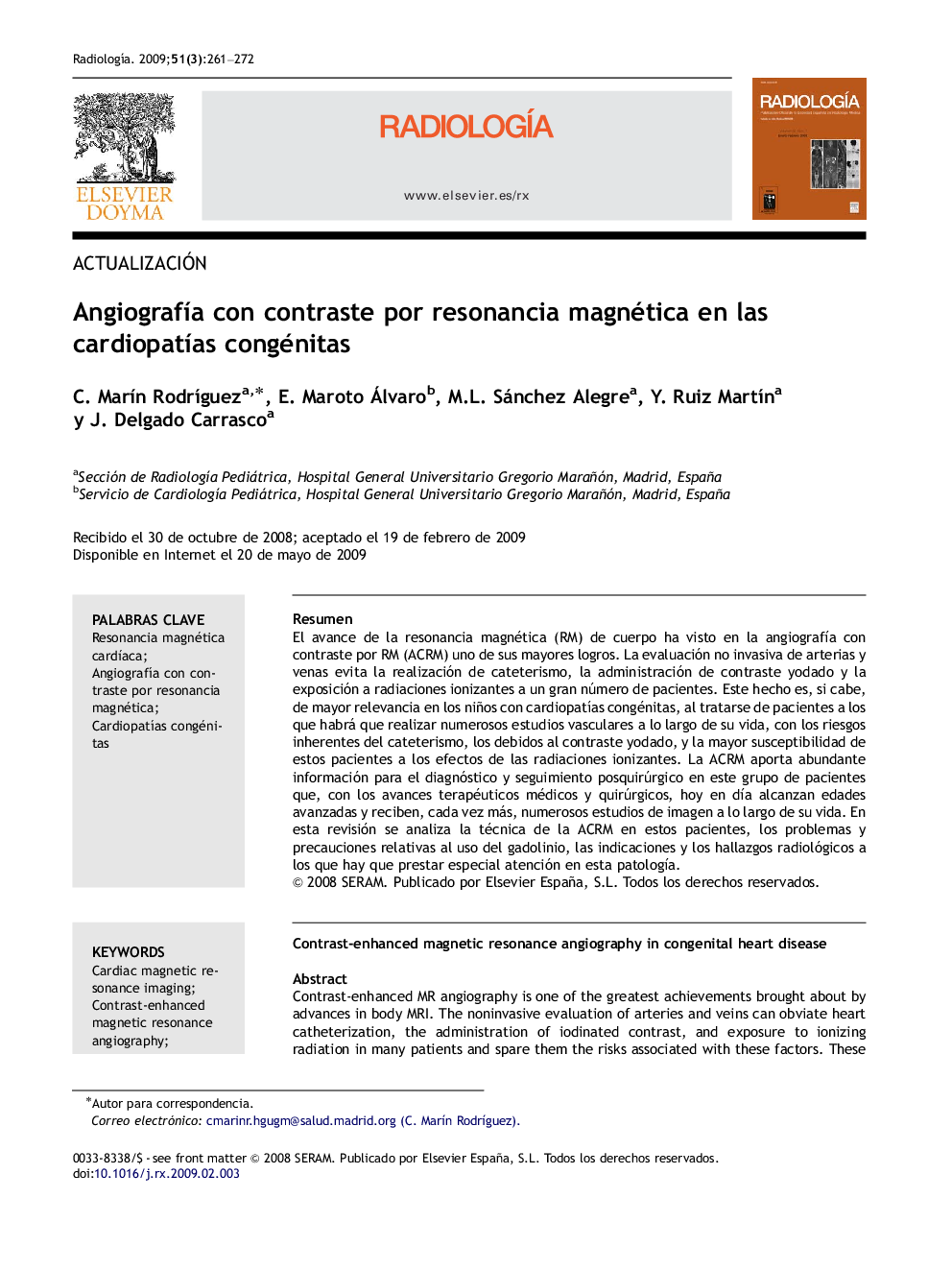| Article ID | Journal | Published Year | Pages | File Type |
|---|---|---|---|---|
| 4245842 | Radiología | 2009 | 12 Pages |
ResumenEl avance de la resonancia magnética (RM) de cuerpo ha visto en la angiografía con contraste por RM (ACRM) uno de sus mayores logros. La evaluación no invasiva de arterias y venas evita la realización de cateterismo, la administración de contraste yodado y la exposición a radiaciones ionizantes a un gran número de pacientes. Este hecho es, si cabe, de mayor relevancia en los niños con cardiopatías congénitas, al tratarse de pacientes a los que habrá que realizar numerosos estudios vasculares a lo largo de su vida, con los riesgos inherentes del cateterismo, los debidos al contraste yodado, y la mayor susceptibilidad de estos pacientes a los efectos de las radiaciones ionizantes. La ACRM aporta abundante información para el diagnóstico y seguimiento posquirúrgico en este grupo de pacientes que, con los avances terapéuticos médicos y quirúrgicos, hoy en día alcanzan edades avanzadas y reciben, cada vez más, numerosos estudios de imagen a lo largo de su vida. En esta revisión se analiza la técnica de la ACRM en estos pacientes, los problemas y precauciones relativas al uso del gadolinio, las indicaciones y los hallazgos radiológicos a los que hay que prestar especial atención en esta patología.
Contrast-enhanced MR angiography is one of the greatest achievements brought about by advances in body MRI. The noninvasive evaluation of arteries and veins can obviate heart catheterization, the administration of iodinated contrast, and exposure to ionizing radiation in many patients and spare them the risks associated with these factors. These gains are even more important in children with congenital heart disease, who will have to undergo numerous vascular studies in their lifetimes and are more susceptible to the effects of ionizing radiation. Contrast-enhanced MR angiography provides abundant information for diagnosis and postoperative follow-up in these patients, who reach advanced age thanks to advances in medical and surgical treatment and thus receive more and more imaging studies during their lifetimes. In this review, we analyze the contrast-enhanced MR angiography technique in these patients, the problems and precautions related to the use of gadolinium, the indications for the test, and the relevant imaging findings in patients with congenital heart disease.
